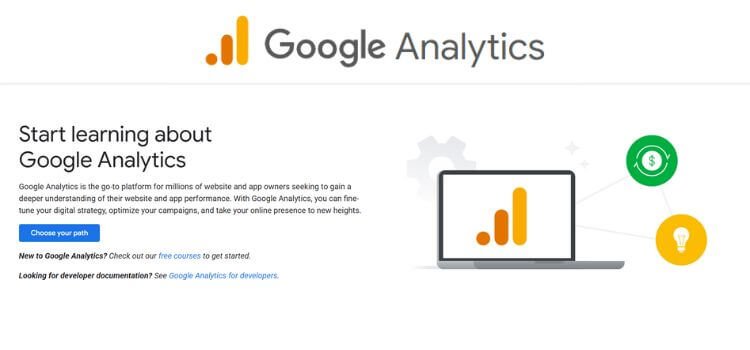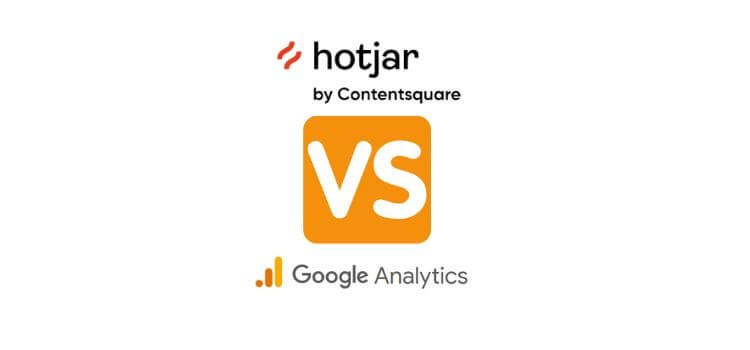When I started digging into Hotjar vs Google Analytics, I figured they’d do the same job—boy, was I wrong. Google Analytics? It’s like a spreadsheet wizard, tracking pageviews, user demographics, and conversion funnels. Hotjar, on the other hand, feels like a backstage pass to user behaviour. Those heatmaps showed visitors were ignoring my “Buy Now” button because it blended into the background—something Google Analytics’ numbers never explained.
But here’s the kicker: using just Hotjar left me clueless about where traffic came from or which campaigns worked. Now, I marry both tools. Google Analytics flags the problem; Hotjar solves the mystery. Think peanut butter and jelly—separately good, together unstoppable. Let me show you how it works.
Table of Contents
What Is Hotjar?
Hotjar is a tool for analyzing user interactions with your website. It uses heatmaps, session recordings, and surveys to show what users click, scroll, and focus on. With Hotjar, you can visualize user behaviour, identify issues, and improve your website’s design.

Main Features:
- Heatmaps: Visualize where users click, scroll, and hover.
- Session Recordings: Watch real-time recordings of user sessions.
- Surveys and Feedback: Collect user feedback directly on your site.
- User Funnels: Track where users drop off in your sales or signup processes.
I used Hotjar on my blog and found that users often skipped the sidebar. After removing unnecessary widgets and optimizing the layout, my page views increased by 15%.
What Is Google Analytics?
Google Analytics tracks website traffic, user demographics, and performance metrics. It shows where your visitors come from, how they navigate your site, and what actions they take. This tool is essential for understanding your audience and optimizing your marketing efforts.

Main Features:
- Traffic Reports: Measure visits, sessions, and pageviews.
- User Demographics: Understand the age, location, and interests of your audience.
- Behaviour Reports: Track how users move through your website.
- Real-Time Reports: Monitor live user activity.
I used Google Analytics to see that most of my visitors came from search engines. This insight helped me improve my SEO, leading to a 20% increase in organic traffic.
Key Differences Between Hotjar and Google Analytics
Understanding the differences between Hotjar and Google Analytics helps you choose the right tool for your needs. Below is a detailed comparison of key features and how each tool performs.
Purpose
Hotjar is designed for user behaviour analysis. It shows how users interact with your site using visual tools like heatmaps and recordings. Google Analytics, on the other hand, focuses on website traffic analysis. It provides detailed data on visitor demographics, traffic sources, and performance metrics.
Data Type
Hotjar collects qualitative data that explains how users behave, such as where they click and scroll. Google Analytics gathers quantitative data that shows who visits your site, where they come from, and what actions they take.
Heatmaps
Hotjar offers heatmaps that show where users click, scroll, and hover. This helps you identify which areas of your site get the most attention. Google Analytics does not provide heatmaps.
Session Recordings
Hotjar allows you to watch real-time recordings of user sessions. This feature helps you see how users navigate your site and where they face issues. Google Analytics does not include session recordings.
Surveys and Feedback
Hotjar lets you collect feedback directly from users through surveys and on-site polls. This helps you understand user opinions and improve your site. Google Analytics does not offer this feature.
Traffic Reports
Google Analytics excels in tracking website traffic. It shows the number of visitors, sessions, and pageviews, as well as where your traffic comes from. Hotjar does not provide traffic reports.
User Demographics
Google Analytics offers detailed demographic data, including age, gender, location, and interests. This helps you understand your audience and tailor your content. Hotjar provides limited demographic information.
Performance Tracking
Google Analytics tracks website performance, including page load times, bounce rates, and conversion rates. Hotjar does not measure website performance.
Real-Time Data
Google Analytics offers real-time data that shows how many users are on your site at any moment. Hotjar has limited real-time data capabilities.
User Funnels
Both tools allow you to create user funnels that show where users drop off in the conversion process. This helps you identify and fix issues that prevent users from completing their goals.
| Feature | Hotjar | Google Analytics |
|---|---|---|
| Purpose | User behaviour analysis | Website traffic analysis |
| Data Type | Qualitative (how users interact) Yes ✅ | Quantitative (who visits and what they do) |
| Heatmaps | Yes ✅ | No ❌ |
| Session Recordings | Yes ✅ | No ❌ |
| Surveys and Feedback | Yes ✅ | No ❌ |
| Traffic Reports | No ❌ | Yes ✅ |
| User Demographics | Limited | Detailed |
| Performance Tracking | No ❌ | Yes ✅ |
| Real-Time Data | Limited | Yes ✅ |
| User Funnels | Yes ✅ | Yes ✅ |
Note: Hotjar focuses on visual insights and user feedback, while Google Analytics tracks website traffic and performance metrics.
Using both tools together gives you a comprehensive view of your website. Hotjar shows you what users do, while Google Analytics tells you who they are and where they come from.
Which Tool Should You Choose?
Choosing between Hotjar and Google Analytics depends on your goals:
- Use Hotjar if: You want to understand how users interact with your site. Heatmaps, session recordings, and surveys help you improve user experience.
- Use Google Analytics if: You need detailed reports on website traffic, user demographics, and performance.
- Use Both if: You want a complete picture of your website. Google Analytics tracks who visits, while Hotjar shows what they do.
Comparison of Pricing
| Tool | Free Plan | Paid Plans |
| Hotjar | Limited features, up to 35 daily sessions | Starting at $39/month |
| Google Analytics | Free (Google Analytics 4) | Free for most users (paid for enterprise) |
Note: Google Analytics is free for most websites, while Hotjar requires a paid plan for advanced features.
FAQs
What is the main difference between Hotjar and Google Analytics?
Hotjar focuses on user behaviour, while Google Analytics tracks website traffic and performance.
Can I use Hotjar and Google Analytics together?
Yes, using both tools gives you a complete picture of your website’s performance and user experience.
Is Hotjar free to use?
Hotjar offers a free plan with limited features. Paid plans start at $39/month.
Is Google Analytics free?
Yes, Google Analytics 4 is free for most websites. Enterprise users may need a paid version.
Which tool is better for tracking user behaviour?
Hotjar is better for tracking user behaviour because of its heatmaps, session recordings, and feedback tools.
Conclusion
Choosing between Hotjar vs Google Analytics depends on what you need. Hotjar helps you see how users interact with your site, while Google Analytics tracks who visits and how they behave. Using both tools gives you the best insights, helping you improve user experience and website performance. Combining the visual insights of Hotjar with the performance tracking of Google Analytics creates a powerful toolkit for optimizing your website.
This post contains affiliate links. I may earn a commission if you make a purchase through them, at no extra cost to you.








